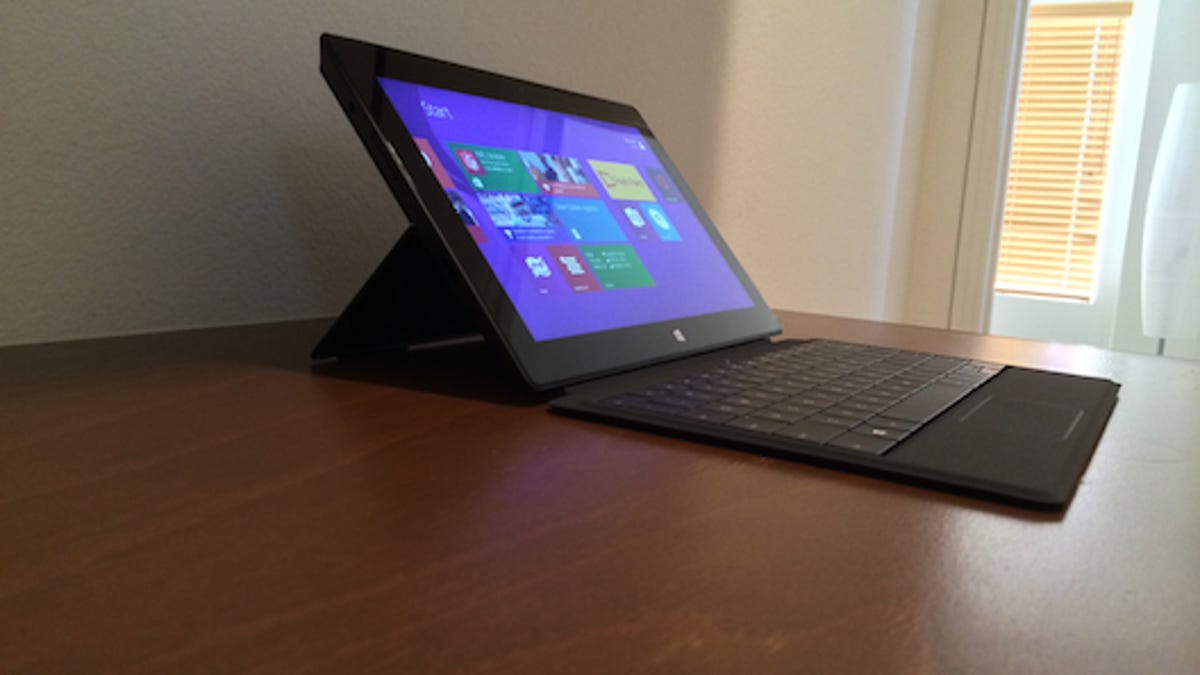Rethinking Microsoft's tablet: Surface Pro 2 succeeds
With Surface Pro 2, Microsoft has made a tablet-hybrid that works. It's powerful, portable, and well-made. A brief review of Microsoft's newest tablet.

The Surface Pro 2 is an excellent laptop-tablet hybrid.
I didn't think I would ever be able to write those words after using (for two months) the original Surface Pro, then selling it because, well, I didn't like it.
The Surface Pro 2 changed my mind, though.
A good laptop-tablet hybrid is extremely difficult to design and build; it took me a while to realize this.
Build something that works well as a tablet and it probably won't be a very good laptop. Emphasize the laptop aspect too much and it's a lousy tablet.
In short, the perfect hybrid will probably never exist. (I don't even think Apple can pull it off.) And many consumers will always prefer the tried-and-true clamshell laptop.
But Microsoft has gotten closer than most to the ideal hybrid by unabashedly marketing it as a powerful, highly-portable laptop that can be a tablet if needs be.
Here's why it works:
- High quality: This has become probably the single most important criterion for me in evaluating a product. A novel design can look and sound great on the product page, but if it isn't put together well, forget it. There are too many half-baked Windows PCs, hybrids -- whatever -- out there. A lot falls into the throw-it-on-the-wall-and-see-if-it-sticks category. The Surface Pro 2 is precisely the opposite. It is a carefully conceived design with a very-high-quality build. To some degree the above applied to the original Surface Pro but its first-gen keyboard (Type Cover) didn't always work, the battery life was short, the unit got hot, and Windows 8 had some usability challenges early on. None of those are issues for me with the Surface Pro 2, with the exception of Windows usability.
- I understand the design better now: The fact that the Surface Pro is relatively thick for a tablet put me off at first. But I understand the necessity now. Microsoft bypassed both the Intel Atom and Core Y series processors. Those two chips, particularly the former, are power-frugal designs that would allow a thinner chassis. Instead, Microsoft opted for the mainstream U series Core i5 processor. That powerful chip requires a (small) fan and a relatively big battery to keep it going. But it's fast. Very fast. Benchmarks bear this out. It feels just as quick as my 13-inch MacBook Pro Retina -- which uses a higher performance Core i5 (and is much heavier). And that's really important to me when doing work-related "productivity" tasks that require a lot of horsepower.
- More compact than an ultrabook: Let's be clear, 0.53 inches isn't exactly thick for a laptop. The thinnest ultrabooks aren't that thin. And two pounds isn't exactly heavy either. That's lighter than the minimalist 11-inch MacBook Air.
- Works with my Apple LED Cinema display: This is a big plus for me. And everything is snappy -- it has no problem pushing around the pixels on the 2,560x1,440 display. The first-gen Surface Pro, despite having a Mini DisplayPort, did not work with a Cinema display (which was one of the reasons I sold it).
- Dock: I don't have the dock but the fact that one exists is important. I used Hewlett-Packard laptops for years with port replicators and docking stations. Life is a lot easier when you can pop the computer into a dock with all the cables and connections already in place.
- Type Cover 2 keyboard: It's not full-sized but can be used as a full-time keyboard. I got used to it quickly and, again, could type on it all day. One complaint: Microsoft should make the buttons on the trackpad discrete with tactile (not just audible) feedback.
- It could really be your only compute device: The whole idea, after all, is not to haul around both a tablet and a laptop. That's entirely possible with the Surface Pro 2. The problem that less-powerful tablet hybrids have is that they can't handle processor- and keyboard-and-mouse intensive work.
- Windows 8.1: The OS has its detractors and it's certainly not perfect (too much switching between Metro and desktop modes, for instance). But I have fewer pull-out-your-hair, show-stopping gripes than before. In other words, I can get work done, for the most part, as efficiently as I can on my MacBook Pro. And settings in Google Chrome (where I spend a lot of my time) can be set for high-resolution displays now in Windows 8.1. That makes a difference too.
- Gratuitous advice for Microsoft: Though I have a better understanding of the Surface Pro's design now, Microsoft should make an effort with the third-generation Pro to reduce bulk. When used strictly as a tablet, it's not something you can easily pick up and plop in your lap. In other words, if you have an iPad Air and Surface Pro on the table in front of you, you're much more inclined to grab the 1-pound Air. Microsoft could still build a powerful Surface Pro that is, let's say, 0.40-0.45-inches thick and between 1.5 and 1.7 pounds. That would make the Surface Pro almost irresistible, in my opinion.

